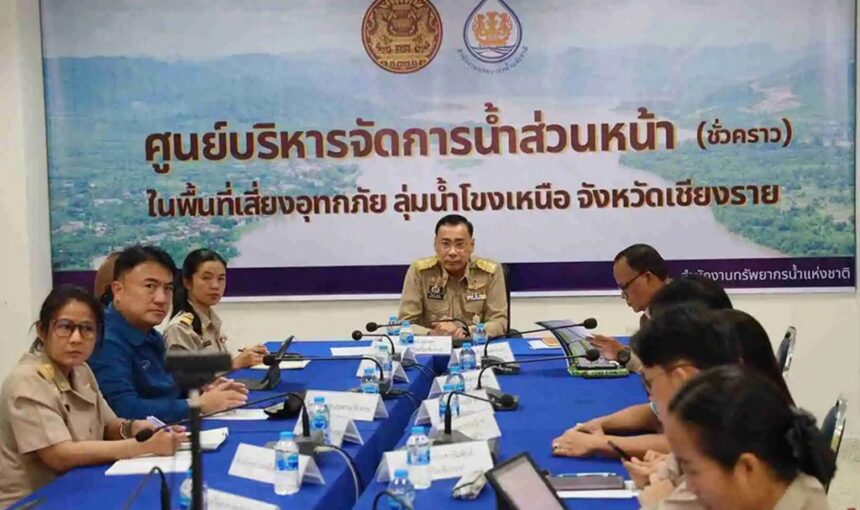CHIANG RAI – During the rainy season, Chiang Rai is facing major challenges with water quality in its key rivers and the risk of flooding across several districts. The Kok, Sai, Ruak and Mekong rivers, which are vital to the local economy and daily life, were especially affected.
On Monday, officials gathered at the Provincial Water Management Centre in Chiang Rai. Mr Charin Thongsuk, Chiang Rai’s governor, led a meeting with relevant agencies. Officials from Chiang Mai and Lamphun attended the meeting via video conference.
Deputy Prime Minister and Minister of Digital Economy and Society, Mr Prasert Chantrarawongthong, chaired the session. The focus was on reporting progress in addressing water quality concerns and flood prevention.
The governor reported on recent findings from the Office of Environment and Pollution Control Region 1. Tests detected arsenic contamination in the Kok, Sai and Mekong rivers, especially downstream of the Chiang Rai dam, where arsenic levels had exceeded current standards.
This issue partly arose from opening floodgates and dredging, which caused sediment containing arsenic to mix into the water. However, levels downstream of the dam were still lower than at the upstream sections of the Kok.
Mobile inspection teams
In response, Chiang Rai set up three main environmental monitoring centres at the provincial hall, the First Friendship Bridge, and the Golden Triangle. The province also suggested that the Ministry of Natural Resources and Environment send mobile inspection teams to villages and communities, as well as increase the frequency of tap water testing. Current checks confirmed that water supplies remain within safety standards.
The provincial fisheries office is regularly testing fish from the Kok and Sai rivers for contaminants and disease, collecting samples twice each month. Vegetables irrigated with water from the Sai River are also tested at the Chiang Rai Medical Science Centre, and so far, no contamination above standard has been found.
On public health, Chiang Rai’s public health office has taken proactive steps. Health checks and monitoring for unusual symptoms are ongoing, with public updates provided to keep everyone informed. Local health centres now act as reporting points for symptoms that may be linked to contaminated water or fish.
For flood preparedness, Chiang Rai reviewed its flood risk plans across the Kok, Sai, Mekong and Ruak river basins. Over 21 water level monitoring devices have been installed along the Kok. Flood response drills were scheduled for June, and high-risk areas such as Mae Sai, Thoeng and Mae Chan now have water pumps in place. The provincial command centre operates around the clock to coordinate efforts.
Health and Food Security
Engineering units have built flood barriers and dredged parts of the Ruak in Mae Sai, while cross-border cooperation with neighbouring countries is ongoing to help dredge the Sai river to limit transboundary flooding. Emergency plans are set at the village level to protect key sites such as Chiangrai Prachanukroh Hospital, the airport, and water treatment stations.
Mr Nattharat Porndetanan, the provincial fisheries chief, said local health workers collected fish samples from the Kok River. This reflected concerns from residents who depend on these rivers for food and extra income. Many had stopped fishing after news of contamination spread. Locals have called for swift and transparent lab results to restore confidence in the community.
Efforts to improve water quality and disaster management in Chiang Rai show the commitment from the government, local authorities and communities. Ongoing work includes public communication, raising awareness and strict quality controls. These actions aim to protect health and food security for everyone in Chiang Rai.
While the situation in the Kok River basin remains a worry, joint action from all sectors, regular checks and open communication have become the foundation for restoring public trust and safety in Chiang Rai.
Related News:
Chiang Rai Residents Say Government Sitting on Its Hands Over Arsenic in Rivers














